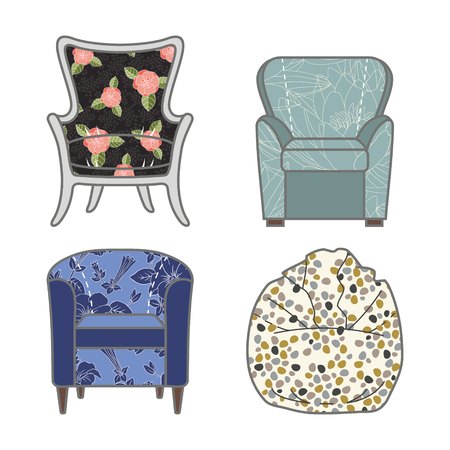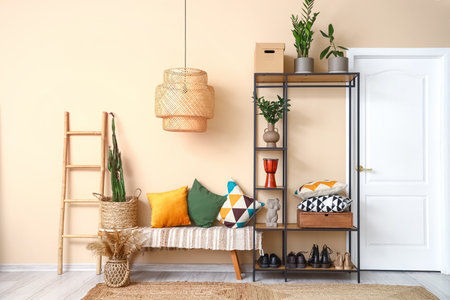Introduction to DIY Furniture Makeover in Indian Homes
The concept of transforming old or ordinary furniture into unique, personalised pieces is rapidly gaining ground across urban and semi-urban India. As more Indian homeowners seek creative solutions for home improvement, the trend of DIY (Do-It-Yourself) furniture makeovers has found a special place in modern Indian décor. Driven by a desire to express individuality and embrace sustainability, Indians are increasingly upcycling their existing furniture using techniques such as painting, block printing, and stenciling. This growing movement is not only about saving costs but also about infusing homes with personal stories, traditional motifs, and vibrant colours that resonate with Indian culture. With easy access to DIY resources and inspiration through social media platforms like Instagram and Pinterest, even first-time enthusiasts are discovering the joy of giving their old tables, chairs, or cabinets a new lease of life. In this article, we will delve into how you can start your own DIY furniture makeover journey at home, and why this trend is becoming a popular choice among Indian families looking to refresh their living spaces without breaking the bank.
Choosing the Right Furniture for Makeover
Before you unleash your creativity with paints, block prints, or stencils, it’s essential to select furniture pieces that truly reflect Indian aesthetics and suit your home’s needs. Choosing the right base makes all the difference for a successful DIY furniture makeover, especially when considering popular Indian furniture styles. Here are some valuable tips to guide you:
Tips for Selecting Furniture Pieces
- Assess Material Quality: Opt for solid wood pieces like teak, sheesham, or mango wood, which are durable and absorb paints or dyes well.
- Consider Surface Texture: Smooth surfaces are ideal for stenciling and painting, while slightly rough textures can be enhanced with block printing.
- Functionality Matters: Choose items that serve a purpose in your home—think storage cabinets, side tables, or seating solutions.
- Condition Check: Ensure there is no major structural damage. Minor scratches or stains can be easily covered up during your makeover.
Popular Indian Furniture Styles for DIY Projects
| Furniture Type | Description | Why Its Ideal for DIY |
|---|---|---|
| Charpai (Traditional Cot) | A classic woven bed made from wood and jute ropes; often found in rural and urban Indian homes. | The wooden frames can be painted or stenciled, and even the ropes can be dyed for a fresh look. |
| Diwan | A low-seating wooden couch, often used as a daybed in Indian living rooms. | The broad wooden arms and sides offer excellent surfaces for intricate painting or block printing. |
| Small Wooden Cabinets (Almirahs/Chests) | Compact storage units commonly used for clothes or utensils. | The flat doors and panels are perfect canvases for stenciling traditional motifs or vibrant colors. |
Selecting According to Space & Use
- If you live in a compact apartment, pick space-saving pieces like nesting tables or folding stools that can double up as accent decor after the makeover.
- Larger homes with verandas or patios can utilize bigger items like charpais or diwans for both indoor and outdoor use.
- Look for furniture with minimal existing polish; raw wood absorbs paint better and ensures longer-lasting results.
Cultural Tip:
Embrace regional influences—Rajasthani motifs on diwans, Madhubani art on cabinets, or Warli patterns on charpais can bring an authentic desi touch to your DIY project. By thoughtfully selecting your furniture piece, you lay the foundation for a meaningful and eye-catching makeover suited to Indian homes.

3. Painting Techniques with a Desi Twist
Transforming your old furniture with a fresh coat of paint is a classic DIY move, but infusing it with Indian flavour takes it to the next level. Here’s how you can achieve an eye-catching makeover that feels right at home in any Indian household.
Step 1: Surface Preparation for Indian Conditions
Given India’s diverse weather—from the dry heat of Rajasthan to the coastal humidity of Chennai—surface prep is crucial. Start by cleaning your furniture thoroughly to remove dust and oil, then lightly sand the surface to ensure better paint adhesion. For wooden pieces, apply a primer suited for high humidity or temperature fluctuations; this step prevents warping and peeling over time.
Step 2: Choosing Vibrant Colours
Indian homes are known for their love of bold, vibrant colours. Think rich marigold yellow, peacock blue, deep vermillion, and lush greens. Opt for chalk paints if you’re after a matte, vintage look—they work beautifully on wood and offer excellent coverage. Don’t shy away from mixing shades or layering colours for depth; experiment on a small patch before committing.
Desi Tip:
Add a dash of metallic gold or copper highlights using acrylic paints to give your piece that unmistakable festive touch.
Step 3: Incorporating Traditional Patterns
Draw inspiration from classic Indian motifs like paisleys, florals, and mandalas. Use painter’s tape to outline patterns or try freehand designs for an artisanal vibe. If you’re new to painting, stencils make it easy to create intricate designs without much fuss—just secure them firmly before painting and use a sponge for even application.
Pro Tip:
For a true desi twist, layer patterns—paint a solid base colour first, then add contrasting motifs on top once dry. This creates visual interest and celebrates the maximalist spirit found in many Indian homes.
Step 4: Finishing Touches
Once your artwork is complete and fully dry, seal the paint with a clear varnish or wax finish suitable for the local climate. This not only protects your masterpiece from dust and moisture but also enhances its longevity—essential in bustling Indian households.
4. Block Printing Inspiration for Indian Homes
Block printing is a cherished Indian craft that has been adorning textiles and décor for centuries. Bringing this art form into your DIY furniture makeover instantly infuses a desi vibe and cultural richness. By using locally sourced wooden blocks, you can transfer intricate motifs onto wooden, MDF, or even cane furniture to create one-of-a-kind statement pieces for your home.
Popular Motifs for Furniture Block Printing
Indian block printing celebrates traditional patterns that reflect our heritage. The table below showcases popular motifs and their significance:
| Motif | Description | Cultural Relevance |
|---|---|---|
| Paisley (Kairi) | Curved, teardrop-shaped design | Symbolizes fertility and luck; commonly seen in Indian textiles |
| Floral Patterns | Lotus, marigold, jasmine designs | Represents beauty, purity, and spirituality |
| Geometric Patterns | Chevron, dots, stripes, checks | Adds a modern touch while staying rooted in tradition |
How to Apply Block Printing on Furniture
- Select your wooden blocks from local markets or artisans in regions like Rajasthan or Gujarat.
- Choose natural dyes or acrylic paints that complement your existing home décor.
- Dab the paint evenly on the block using a sponge or brush.
- Press the block firmly on the cleaned surface of your furniture item—side tables, cabinet doors, or headboards work especially well.
- Let it dry completely before applying a sealant for durability.
Pro Tips for a Flawless Finish
- Test print on paper before applying directly to furniture.
- Mix and match motifs for an eclectic look—don’t hesitate to experiment with colours!
- If you prefer subtlety, opt for tone-on-tone shades; for bold impact, contrast vibrant hues like rani pink or peacock blue against neutrals.
The Desi Difference
Unlike generic prints, Indian block printing brings warmth and identity to your space. Customizing old chests or benches with paisleys or florals not only revives them but also supports local artisans and keeps our craft traditions alive. This blend of heritage techniques with contemporary DIY spirit is what sets Indian homes apart in style and soul.
5. Creative Stenciling with Indian Motifs
Bringing Desi Flavours to Your Furniture
Stenciling is an easy yet impactful way to give your furniture a completely new avatar while celebrating Indian culture. By using motifs inspired by rangoli, mandalas, and traditional ethnic borders, you can add vibrant energy and personal flair to old cabinets, tables, chairs, or chests. These designs instantly transform bland surfaces into statement pieces that reflect the rich artistry of Indian homes.
Choosing the Right Indian Motifs
When selecting stencils, look for patterns that resonate with Indian sensibilities. Rangoli designs bring in festive cheer with their floral and geometric intricacy. Mandala stencils offer symmetry and spiritual depth, perfect for meditation corners or pooja units. Ethnic border patterns—like paisleys, elephants, or peacock feathers—are ideal for framing table edges or drawer fronts, offering a subtle nod to our heritage.
Techniques for Stunning Results
- Surface Prep: Make sure your furniture surface is smooth and dust-free. Use a primer if needed for long-lasting results.
- Stencil Placement: Secure your stencil firmly using painter’s tape so it doesn’t move while working. Plan your layout in advance for balanced aesthetics.
- Colour Palette: Go bold with jewel tones like rani pink, peacock blue, turmeric yellow, or emerald green—colours that echo Indian vibrance. Metallic gold or silver highlights can further enhance the ethnic touch.
- Paint Application: Use a stencil brush or sponge with minimal paint to avoid bleeding. Dab gently in layers rather than brushing across.
Creative Ideas for Every Room
- Pooja Mandir: Add lotus or om mandala motifs to wooden shelves for spiritual vibes.
- Coffee Tables: Decorate tabletops with rangoli-inspired medallions as conversation starters.
- Wardrobes & Cabinets: Accent doors with border stencils featuring elephants or paisleys for an ethnic chic look.
Personalising Your Space
The beauty of DIY stenciling lies in customisation—mix different motifs, play with colours, and experiment with placements until you achieve a look that feels uniquely yours. Not only does this approach breathe new life into old furniture, but it also reflects your love for Indian art and culture right at home.
6. Finishing Touches & Care Tips
Sealing Your DIY Masterpiece
After transforming your furniture with vibrant paints, intricate block prints, or elegant stenciling, sealing is a crucial step to ensure longevity—especially in Indian homes where humidity and dust can be a challenge. Consider using a clear polyurethane or acrylic sealer for painted surfaces. These water-based sealers dry quickly and do not yellow over time, making them ideal for the Indian climate. For a more natural finish, opt for furniture wax or eco-friendly varnishes; these not only protect but also enhance the character of the wood. Remember to apply the sealer in thin, even coats and allow adequate drying time between applications.
Waxing for Enhanced Durability
Waxing is an age-old Indian practice that gives wooden furniture a subtle sheen while adding a protective layer. Use a soft cloth to gently rub paste wax into the surface, focusing on carved or printed details where dust tends to settle. Buff thoroughly for a smooth, lustrous finish that resists daily wear and tear. Regular waxing—every 4-6 months—helps maintain the richness of colours and patterns, particularly important in high-traffic areas like living rooms or family spaces.
Maintaining Upcycled Furniture in Indian Homes
Humidity Management
Indian weather varies from dry heat to monsoon dampness, both of which can affect upcycled furniture. Keep pieces away from direct sunlight and use dehumidifiers or silica gel packs during monsoon months to prevent swelling or warping.
Dust Control
With dust being an everyday concern in many Indian cities, regular cleaning is essential. Wipe surfaces with a slightly damp microfiber cloth followed by a dry one to avoid moisture damage. For block printed or stencilled designs, use gentle strokes to preserve intricate patterns.
Daily Use Tips
Avoid placing hot pots or wet glasses directly on your revamped furniture. Use traditional coasters (chatai) or runners to protect surfaces. Tighten screws and hinges periodically, as temperature changes may cause fittings to loosen over time.
Embrace the Patina
Finally, remember that a little wear adds personality! Embrace minor imperfections—they tell the story of your home and reflect authentic Indian living. With proper sealing, waxing, and regular care, your DIY furniture makeover will remain vibrant and resilient for years to come.
7. Showcasing Your Makeover: Sharing & Celebrating
Once you have transformed your furniture with painting, block printing, or stenciling, it’s time to celebrate your accomplishment and inspire others in the Indian DIY community. Sharing your makeover journey not only gives you a sense of achievement but also motivates countless others to explore their creativity.
Share on Local Social Platforms
India has a vibrant digital ecosystem where home-grown social platforms like ShareChat, Moj, and WhatsApp groups are widely used alongside global giants like Instagram and Facebook. Post before-and-after photos, short reels of your process, or even quick tips on these platforms using popular hashtags such as #IndianDIY, #HomeMakeoverIndia, or #VocalForLocalDecor. Tagging local brands or craft stores you used can also help amplify your reach within the community.
Join Indian DIY Communities
Connect with like-minded enthusiasts by joining forums and groups dedicated to DIY and home décor—such as India-specific subreddits, Facebook Groups like “DIY Home Decor India,” or city-based Telegram channels. These communities are great for exchanging ideas, seeking feedback, and discovering new trends unique to Indian homes. Regular participation can open doors for collaborations or even influencer opportunities in the growing Indian lifestyle space.
Inspire Others to Take the Creative Leap
Your story could be the catalyst for someone else’s creative journey. By showcasing your work and sharing practical tips—like where to source eco-friendly paints from Jaipur markets or how to find traditional block printing workshops in Ahmedabad—you build a network of inspiration rooted in Indian culture. Encourage friends, family, and followers to try their hand at DIY furniture makeovers and watch as the movement grows, one colourful corner at a time.
Celebrating your DIY achievements publicly not only enhances your home but also contributes to a larger movement of self-expression and sustainable living across India. So don’t hesitate—share your transformation today and become a trendsetter in the world of Indian home décor!

